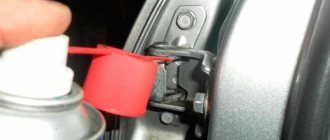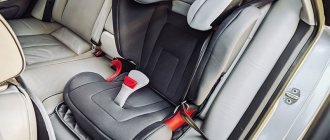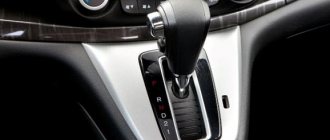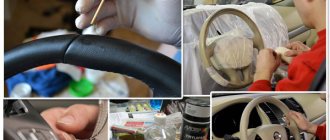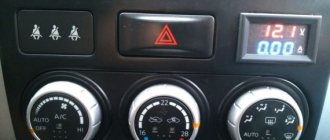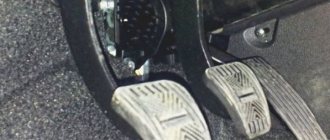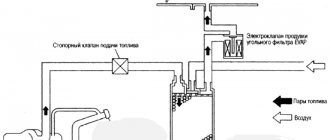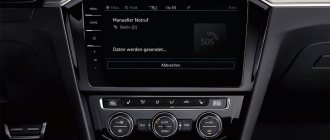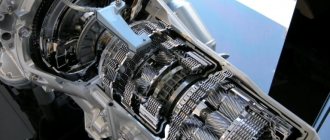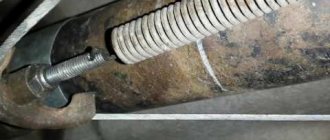In this article I will tell you what ELM327 is, why it is needed, how to choose ELM327, what cars can be diagnosed, which application to choose for diagnostics, and I will give detailed instructions for working with ELM327.
Today, every car has an ECU (electronic control unit). The ECU collects all the data from the electronic components in the car and builds the correct operating mode for it. Often electronic components fail and then you have to contact a car diagnostician. This pleasure is not the cheapest, and finding a good automotive electronics specialist is a big problem. As a rule, most of them will simply print out the errors for you and quickly send you to another service, taking a certain amount of money. So why give someone your hard-earned money if you can diagnose your car yourself without any problems?
So today we’ll talk about such a wonderful device as the ELM327, which will help save you a lot of time, nerves and money. I will tell you what kind of scanner this is, how much it costs, how to use it, what cars can be diagnosed.
ATTENTION: today we will look at the Chinese version of the ELM327 and talk about it. How to distinguish the Chinese version from the original? Yes, very simple. Most likely, everything you come across for sale will be made in China. I bought the Chinese version on Aliexpress or you can buy it at a car store at a reasonable price. The original version of the auto scanner costs fabulous money, and why do you need it?
What is ELM327 and why is it needed?
ELM327 - This is a scanner or adapter that connects to the car’s on-board computer via the OBD-II connector and reads readings from electronic control units. This miracle device will help you:
- Diagnose the malfunction;
- View sensor readings online;
- Display operating graphs of various vehicle systems;
- Reset errors of the ECU and other units.
ELM327 Bluetooth
Many scanners open up even more possibilities, and a lot also depends on the car. Case color and shape may vary.
The scanner is most often presented in the form:
- Bluetooth adapter. The most common and cheapest, works with Android (today we’ll look at it);
- USB ELM327, which works in tandem with a computer;
- Wi-Fi adapter. If you have an iPhone, then this is your choice.
The auto scanner is worth buying only with firmware version 1.5 You should not take any tempting ! You will only be disappointed. That is, Autoscanner ELM327 version 1.5 is your choice.
The cost of this device usually starts from 300 ₽. I don’t recommend taking anything cheaper. You need to focus on the cost of 300-600 rubles . There is no point in buying an expensive OBD-II scanner.
also highly recommend not using the disk that comes with the scanner. Most likely there is nothing useful there, and it often happened that there were viruses there.
OBD2 standard interface
Firstly, the concepts of “OBD2 connector” and “OBD2 interface” should be clearly distinguished.
The interface is all the “stuffing”, all aspects, including the connector itself, that affect a set of standards. These aspects include:
- Shape, assembly diagram, pinout, connections and location of the connector;
- Standards of executive and control commands, order and form of data exchange, message format, supported programs;
- Type and priorities of communication.
At its core, the interface characterizes the software with which OBD2-type diagnostic devices operate. All functions programmed in it are consistent with OBD2 standards.
Now, on the Internet, you can find many utilities with the help of which OBD2 test devices work with personal devices on different platforms (IPhon, Microsoft, Android).
The leader in popularity is OBD-2 iPhone Application - prof. application for iPhone and iPad, designed for car diagnostics using OBD2 and ELM327 equipment. The main indicator of its popularity is its mobility. Scanners and autotesters with this software connect to both Apple computers and laptops, as well as smartphones and tablets. This makes it possible to test anywhere and in any situation. And real-time tracking features turn your phone into your car's remote control.
The DashCommand and Torque applications have become widespread; their clear interface and ease of use have won the sympathy of many car owners.
Before the advent of mobile phone apps, Windows utilities almost reigned supreme in the diagnostic realm. Among them, ScanTool and MyTester are still particularly popular. However, fewer and fewer users give their preference to PC utilities.
But there is one significant advantage of such software - this is a high degree of security of both the PC itself and the on-board computer from outside (hacker) interference. The reason lies in the connection method. Mobile applications communicate wirelessly (Wi-Fi and Bluetooth), and the PC connects via a USB port. In the first case, any gadget with a similar program that is within wireless range can gain access to your car and PC. Whereas, in the case of communication via USB, in order to log into your system, he needs to sit in your place in front of the computer.
What cars can be diagnosed by ELM327
The first thing you need to know is whether your car has an OBD 2 diagnostic connector and where it is located. The easiest way to do this is by entering the make and year of manufacture of the car .
OBD-II diagnostic connector
I will say right away that almost all cars since 2000 , as well as some earlier models, have an OBD-II diagnostic connector. Even if your car model does not have this connector, do not worry, there are adapters.
Where is?
There is no general standard, and this connector can be stuck anywhere. For example, on my OPTIMA it is located at the bottom of the front panel, behind a special cover . That is, I opened it and only after that I saw it.
ON other cars, for example VOLKSWAGEN or FORD, it may be under the steering wheel , you need to look under it and you will immediately see.
In third cases, the car may be in the glove compartment , on the side or somewhere on top.
As you can see, there is no specific place. Look under the dashboard, under the steering wheel, in the glove compartment, these are the most common places.
Selecting a diagnostic application
I think that you won’t have any questions here. Go to Google Play (Play Market) and download the application “ InCarDoc free ” (Car Doctor). The advantage is that the program is in Russian. I have been using this application for a long time and have not had any problems with it, especially since there is a PRO version on the Internet that can be installed for free.
There are also programs called Torque, OpenDiag Mobile, Car Scanner ELM OBD2, HobDrive and others. Torque, for example, will help display additional widgets on the screen, and if you have an Android radio, you can use this program as an on-board computer. The choice is actually great. Everyone has the same goal - to read the electronic components of your car. If for some reason you don’t like “ InCarDoc free ”, then try one of the above suggestions.
Connecting auto scanners to Android devices
This procedure can be performed using a wireless connection via Wi-Fi or Bluetooth. The most common scanner-adapter in our country, ELM327, allows you to use only a Bluetooth connection, but there are many budget car scanners with Wi-Fi functionality, so let’s consider this option first. If you own a fairly old smartphone (for example, running Android 2.2), you will not be able to use a Wi-Fi connection due to the lack of support for ad-hoc networks in this version of the operating system. The problem can be solved by installing the appropriate application. Procedure for connecting the adapter to a smartphone:
- We connect the scanner to the OBD-2 connector on the ECU, wait about 20 seconds. If the LEDs on the auto scanner start blinking, you can start connecting it to your Android device.
- We start scanning Wi-Fi networks on the smartphone; the list that appears should have an entry like WiFi_OBD2 or its variations.
- We need to make some settings, for which we hold down the name of the network that appears, and in the drop-down menu select the “Change network” item.
- On the screen that appears, check the box next to “Advanced settings”.
- Click on the “IP Settings” parameter, go to the “Custom” (or “Static”) tab.
- We manually enter the IP address, which should start with 192.168.0, and the last digit should be greater than 10, since by default the address 192.168.0.10 is assigned to the autoscanner itself.
- Click the “Save” button - if everything is done correctly, the network status will change to “Connected”.
- All that remains is to install the application that allows you to work with the diagnostic device, launch and configure it. As an example, consider the widespread Torque program.
- In the “Adapter Status” menu item, select the “Settings” sub-item.
- In the menu that appears, select “OBD adapter settings”.
- Click “Connection type” and select the WiFi network.
- The program itself should determine the scanner address (192.168.0.10), if this is not the case, we enter it manually, and in the “Port” column indicate the value 35000.
- The settings are completed, you can start working with the diagnostic device.
Now let’s look at the procedure for connecting the OBD2 adapter to a smartphone via Bluetooth.
The connection algorithm will be as follows:
- first we connect the scanner to the OBD-2 connector on the ECU;
- turn on the smartphone, start searching for available connections;
- a list of devices with Bluetooth enabled will appear, select our adapter;
- Enter the connection code (password), which can be found in the documentation for the auto scanner.
If the documentation is lost, you can try to enter the following passwords, one of which may be valid:
- 0000;
- 9999;
- 1234;
- 6789.
If communication between the smartphone and the scanner is not established, to rule out the cause of an incorrect password, try connecting the ELM327 to another smartphone. If it works, the reason is not in the code, but in the implementation features of the microcontroller of the scanner itself - there are often cases when it refuses to work with a mobile device, but connects well to a laptop. Another common reason for the lack of communication between devices is the limited time limit allocated to detecting a Bluetooth device, so it is better to search on your smartphone for an ELM327 family car scanner no later than a minute after connecting the latter to the OBDII connector - in this case, problems with network detection time will not arise must.
Connecting the Scanner to a Windows PC
Although an increasing number of users use a smartphone as a miniature personal computer, and the trend towards increasing screen size is clearly visible, it is the latter factor that often plays a decisive role in the selection of peripherals used to diagnose the condition of the car. Still, 5 and 15 inches are a noticeable difference, and in terms of computing power, smartphones are still clearly inferior to their older brothers. At the same time, viewing some operating modes of vehicle components requires simultaneous monitoring of at least two different sensor indicators in order to see the existence or absence of a certain relationship between them. This cannot be done on a smartphone, so professionals prefer to carry out diagnostics on a laptop or desktop computer.
Ordinary car enthusiasts are not prohibited from doing this either - today you won’t surprise anyone with a laptop, and connecting it to a car scanner is practically no different from a similar procedure for smartphones, despite the difference in operating systems. Moreover, for scanners of the ELM327 family there are no problems with drivers for all versions of the Microsoft OS, starting with the old Windows XP. Another thing is whether the scanner supports your car model. This information can be obtained from the documentation for the adapter or on the manufacturer’s official website. Typically, the diagnostic device also comes with corresponding software supplied on a CD. If it is missing or lost, it doesn’t matter either: on the vastness of the World Wide Web, the necessary program can be found and downloaded in just a few minutes.
Instructions for ELM327
So we have an ELM327 Bluetooth version 1.5 , an Android InCarDoc free program installed , a car with an OBD-II connector . Now you can proceed directly to diagnostics:
- With the ignition off (required), insert the ELM327 into the OBD-II , and it will show signs of life (the LED indicator will light up);
- Turn on Bluetooth on your phone and look for a device called OBDII (the name may vary), then when pairing devices you will be asked to enter a password: usually this is 1234 or 0000.
- If everything worked out, then go to the InCarDoc free and click the green “Connect” button (photo on the left). If everything was done correctly, the inactive sections of the menu will become active (photo on the right).
Connecting to a car in the InCarDoc free
4. Once you have successfully connected to the car, you should start it. 5. Car diagnostics. Follow the instructions in the picture below. To diagnose your car, go to the “Diagnostics” , after a few seconds a list of errors that exist in your car will appear on the screen. Take a screenshot of the screen with errors, this is necessary to study them further and find the cause of their occurrence. Now you can safely clean them. Follow the instructions below:
resetting car errors in the
InCarDoc free
6 program. This program has the function of displaying dynamic parameters on the phone screen in real time. For example, I displayed the engine speed at idle (you can see how they float) and the coolant temperature (the car was just warming up). This program has a fairly wide selection of dynamic parameters output, so I use it.
Displaying the dynamic parameters of the car in the
InCarDoc free
7. To finish working with the ELM327 , simply click the “Disconnect” button in the InCarDoc free . Turn off the car engine and remove the scanner itself from the OBD-II .
Where can I find the OBD connector?
Finding the OBD connector should not be a problem for you, although it will be located in a slightly different location in each car model. In case of problems with its location, the easiest way is to search on the Internet or ask on any automobile forum.
What is the OBD connector for?
The main purpose of the OBD connector is diagnostics. By connecting to the OBD system, you can read error codes and recognize what the problem is. Just reading the code is not everything, the real art is its correct interpretation, but here the Internet often comes to the rescue.
An interesting feature of the OBD connector in modern cars equipped with electronics is the ability to independently and often completely free of charge run certain vehicle functions. First of all, we are talking about numerous comfort systems, the operation of which is stored in the computer, but has not been activated by the dealer. And often such activation in the salon is associated with an additional payment.
Author: Ilya Vasiliev Site specialist: elm327-obd2.ru
How to check the OBD2 protocol on my car?
For example, for the J1850 PWM protocol, the connector must have pins 2 and 10 (the connector must have metal contacts inside pins 2, 4, 5, 10, and 16.)
The J1850 VPW must have pin 2 (the connector must have material pins inside pins 2, 4, 5, and 16, but not 10.)
ISO9141 and 14230 (KWP2000) must have pin 7, while pin 15 is optional (the connector must have metal pins inside pins 4, 5, 7, 15, plus 16...)
ISO 15765 (CAN) must have both pins, 6 and 14 (the connector must have physical pins inside pins 4, 5, 6, 14 and 16.)
Alignment The number of pins and the presence of pins in the connector will determine your vehicle's protocol.
Adapters available on the market
The modern market offers a large selection of adapters that allow you to diagnose a car via a laptop.
Main types:
- ELM OBD2 are easy-to-use scanners running on the ELM 327 chip, designed for independently reading machine errors and eliminating them without visiting a service station. The original adapters of this series come with a Microchip PIC18F25k80 microprocessor, a software disk, a list of faults and diagnostic lessons.
- VAG COM adapters are devices designed to test German cars of the VAG group. Such devices are used by professionals at service stations, but can also be used by ordinary car owners in a garage. It is enough to install the necessary program on your computer.
- Multi-brand scanners are universal devices that can cope with checking most modern car brands. During diagnostics, you can check and erase fault codes, reset service intervals, display system characteristics, encode the ECU and activate a special mode, and study the status of actuators. In addition, they can be used to simulate commands from sensors and monitor changes in the system.
Launch Creader 3001 RUS - Dealer scanners are a professional version of devices for car diagnostics, allowing you to perform a comprehensive check. Such auto scanners only work with cars of a certain brand.
iCarsoft i905 – car scanner for Toyota / Lexus
As you can see, the market for automotive diagnostic scanners is very wide. However, not all equipment is suitable for independently checking a car in a garage.
OBD-2 adapters and extensions existing on the market
Using OBD-2 adapters, car diagnostics are available using modern devices without an OBD connector.
The devices are suitable for Audi, Honda, Mercedes Benz, Audi, Opel, Nissan, Mitsubishi, VAZ and others.
The main types of adapters are listed below.
- GM12 pin - OBD2. Suitable for Chevrolet, Daewoo, ZAZ and VAZ cars.
- GAS 12 pin - OBD2. Suitable for UAZ and GAZ cars, 12 contacts are used.
- AutoCom adapter set for passenger cars. For people who are professionally involved in diagnostics, a set of equipment may be useful; it includes the following set - VAG 2 2 pin -> OBD-2 (for Audi, Skoda, Seat and Volkswagen), BENZ 38 pin -> OBD-2 (for Mercedes Benz ), BMW ADS 20 pin -> OBD-2 (for BMW), FIAT 3 pin -> OBD-2 (for Alfa Romeo, Fial and Lancia), OPEL 10 pin -> OBD-2 (for Opel), PSA 2 pin -> OBD2 (for Peugeot and Citroen), PSA 30 pin -> OBD-2 (for Peugeot and Citroen).
- AutoCom adapter set for trucks. The package includes a 7 pin Knorr Wabco Trailer Cable, as well as other components - 12 pin MAN Cable, pin IVECO Cable, 16 pin SCANIA Cable, 12 pin Renault Cable, 8 pin VOLVO Cable, 37 pin MAN Cable, BENZ Cable.
- VAG 2×2 – OBD-2. Suitable for VAG cars manufactured before 1997. The package includes two chips - diagnostic lines K and L, as well as 12 V power supply with ground. Each of the chips is signed and has markings to prevent incorrect connection.
- Kia 20pin – OBD-2. Used for diagnosing Kia cars. Has 20 connectors. The connector itself is located in the engine compartment. In some models you can use the ELM327 scanner, but using the mentioned adapter.
- Ford 7pin - OBD-2 - for diagnosing Ford, Lincoln and Mercury cars. Mainly used for older Ford cars manufactured between 1985 and 1995.
- Mercedes 38 pin – OBD-2 – is intended for diagnosing Mercedes cars that came off the assembly line between 1994 and 2002. Has 38 pins per connector.
- Mercedes 14 pin - OBD-2 - apron with 14 pin connector for OBD-2. Designed to test Volkswagen, Mercedes Benz (Sprinter, Actros and Atego) cars.
- Nissan 14 pin - OBD-2 - a device for diagnosing old Nissan cars with a 14-pin socket.
- Toyota 22 pin Japan - OBD-2 - adapter for diagnosing cars produced on the Japanese market before the advent of the OBD-2 standard.
- Toyota 17 pin – OBD-2 – used for Toyota cars with a 17-pin OBD diagnostic connector.
- BMW 20 pin – OBD-2 – helps in diagnosing BMW cars manufactured before 2022.
- Honda / Acura 3 pin - OBD-2 - adapter for cars from the manufacturer Acura and Honda that have a 3-pin connector. Its purchase allows you to diagnose older models.
- Honda / Acura 5 pin – OBD-2 – used for diagnosing Honda cars of an earlier model range. Suitable for connecting a car with 16 contacts to models with a 5-pin connector.
- Subaru 9 pin - OBD-2 - used for Subaru cars and provides a transition from a 9-slot to a 16-slot group. This type of OBD was installed on Subaru produced in the period 1993-2001.
- Renault 12 pin – OBD-2 is an adapter that allows you to connect a scanner between a car with 12 and 16 pins. Suitable for checking Renault cars.
- Mazda 17 pin – OBD-2 – suitable for diagnosing Mazda cars with a 17-pin connector. With its help, you can safely use modern scanners.
- Mitsubishi / Hyundai 12 pin - used for Hyundai and Mitsubishi cars produced in the period 1989-1998. They have a block with 12 contacts.
- Opel / Vauxhall 10 pin – OBD-2 – designed for diagnosing Vauxhall and Opel. Cars must be produced before 1996. Their peculiarity is the presence of a rectangular connector with 10 contacts.
- Fiat, Lancia, Alfa Romeo 3 pin - OBD-2 - used for cars of the Alfa Romeo, Lancia and Fiat brands that have a 3-pin socket, as well as alligator clips for external power.
- Peugeot, Citroen 30 pin - OBD-2 - designed for diagnosing Citroen and Peugeot that came off the assembly line before 1997.
- Cummins 9 pin (KAMAZ, KAVZ, PAZ) – OBD-2 – used for diagnosing KAVZ, KAMAZ and PAZ vehicles. Provides transition from 9 to 16-pin connector.
- Volvo 8 pin – OBD-2. Adapter for use on Volvo trucks with an 8-pin block.
- Iveco 30 pin – OBD-2 – used to connect equipment from a 30-pin to a 16-pin connector. Used for diagnosing Iveco cars.
- SCANIA / DAF-16 pin is a convenient tool that provides a transition between old Scania or DAF pads to new types of connectors for diagnostic work.
- OBD-2 1.5 meters - a 1.5 m extension cable designed to connect the connector to the scanner.
- OBD2 20 cm is another extension cord designed for use in conditions of limited access to the connector. There is wiring for all 16 contacts.
- Adapter from OBD-2 to RS232 COM.
The list of adapters and extension cords is wide enough to choose the best option and diagnose cars of different brands and years of manufacture with your own hands.
Introduction: Using the scan tool to diagnose your vehicle
It's state inspection time and you're ready to head to the inspection station early in the morning in your family's '98 minivan.
You start the day in a not-so-cheerful mood because your daughter said “the light came on” on the way home last night. She said she threw a few dollars of gas into the tank to get home. It turns out your irritation is misplaced. Of course the light is on normally, but it's not a fuel warning, it's a check engine warning. You still stop for gas and then enter the control lane. Well, full tank or not, the minivan doesn't pass muster.
Now what? This guide will help you use scan tools to diagnose your car's problems. You can do the basics yourself before taking your car to a mechanic.
This project was originally published in the August 2001 issue of Popular Mechanics. You can find more great projects at Popular Mechanics DIY Central.
How to protect?
The OBD connector must be accessible. However, to prevent unauthorized access, care should be taken to secure or lock this connector.
There are three options for protecting the OBD connector and limiting access to the ECU.
Let's take a closer look at each of them.
1. Move the connector to a hard-to-reach place, or protect it with a special casing.
As a rule, these actions do not entail restrictions on driving. But in this case, the dealer may have questions (especially when moving the connector) about unauthorized intervention in the standard electrical system of the car and about maintaining warranty obligations. In addition, depending on the location of the unit, it is not always possible to install a protective cover.
2. Re-pin the contacts, i.e. swap them, or replace the OBD connector with another one of a non-standard shape.
In this case, the client is given a special adapter for connecting standard equipment (scanners). The disadvantages of this solution are similar to the previous one - the probable removal of the car from the warranty. In addition, each service that carries out diagnostics will be aware of the re-pinning or replacement. This means that there is a high probability that attackers will be prepared for this fact, and the protection will not work.
3. Blocking the connector by breaking the digital bus connecting the connector to the computer.
Blocking is carried out using a standard relay for additional channels of security systems and alarms. We consider this method the most optimal option for protecting the OBD connector from unauthorized access. In this case, the diagnostic connector is available to any connection as long as the alarm or immobilizer is not in armed mode. The connection point is in an inaccessible place, and it is extremely difficult to identify it. As a result, service providers or hijackers will not even know about the blocking.
| You can block the diagnostic connector at any Autostudio branch in Moscow or St. Petersburg. |
Types of OBD2 protocols
There are 5 types of OBD2 protocols:
- SAE J1850 VPW:
this OBD2 protocol is used by Ford. - SAE J1850 PWM:
Common Motors uses this protocol. - ISO 9141-2:
You will find this protocol on Asian, Chrysler and European vehicles. - ISO 14230 KWP2000:
This protocol is used in Asian vehicles. - ISO 15765-4/SAE J2480 (CAN):
You will find this protocol in many new cars, as it was invented for cars that are not legally covered by OBD2 standards. Because it could not meet OBD2 requirements for US vehicles manufactured before 2003. You will find this protocol in many vehicles manufactured after 2008.
